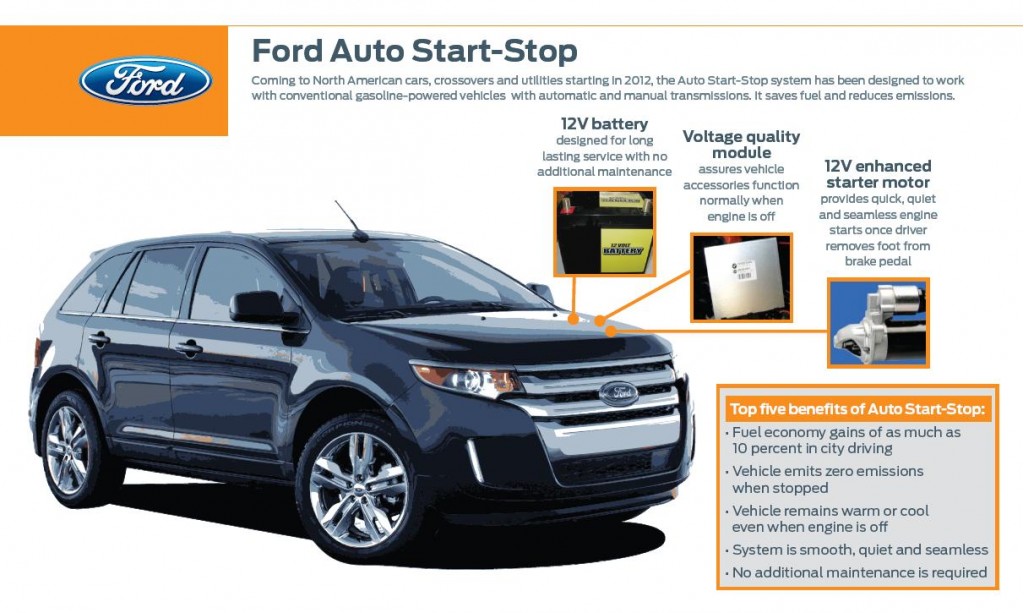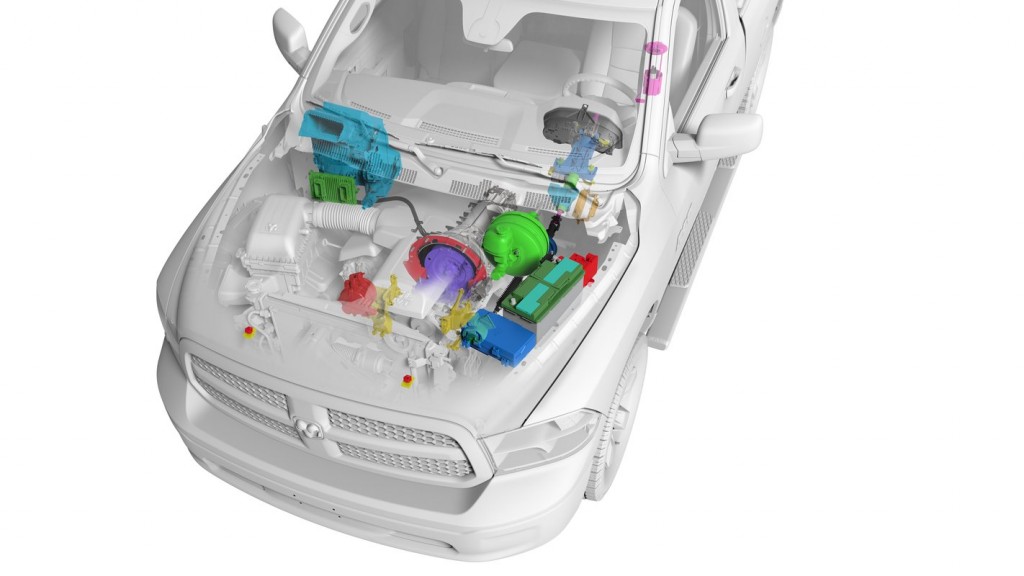Start-stop systems, which switch off a car's engine while it's stopped to boost fuel efficiency, are now entering the U.S. market in serious numbers.
Many European makers, including BMW, Mercedes-Benz, and MINI, are fitting them as standard on 2015 models, and there are more to come: By 2022, some forecasts expect start-stop to be included on more than half of U.S. vehicles.
ALSO SEE: Ford To Have Start-Stop On 70 Percent Of Vehicles By 2017
But car buyers often dislike the feature, which is not only unfamiliar but can also send vibrations through the car when the engine restarts.

Ford Auto Start-Stop fact sheet
Worse, some early data appears to show that the beefier lead-acid starter batteries that enable the system to restart the engine dozens of times a day may need to be replaced more frequently.
That has led some analysts and electronics companies to suggest that start-stop systems will soon include not only the advanced-glass mat (AGM) batteries but also a small ultracapacitor to ease the power draw on those batteries.
DON'T MISS: No Start-Stop For 2015 Honda Fit To Avert Acceleration Lag: Report
Start-stop systems turn the engine back on as soon as the driver begins to lift a foot off the brake pedal (in cars with automatic transmissions), or depresses the clutch to move the gear lever from neutral into first gear (in manual-gearbox cars).
In heavy traffic or frequent use, such systems may be required to restart the engine several dozen times a day--increasing the battery's duty cycle substantially.

2013 Ram 1500 - engine start-stop system
A recent article in trade journal Ward's Auto looks at the potential for ultracapacitor use in future. It notes that the electronic devices are still expensive, but that costs are coming down.
At the moment, only a few vehicles include ultracapacitors--a dozen or so models sold in Europe by PSA Peugeot Citroen, with sales now totaling more than 1 million units.
MORE: 2014 Chevrolet Malibu Start-Stop System: How It Works (And Why It Has 2 Batteries)
Peugeot is able to reduce the capacity of the car's battery by 30 percent by adding the small ultracapacitor, according to supplier Continental.
In the U.S., ultracapacitors are used on the Lamborghini Aventador, not a car most U.S. drivers will ever have a chance to drive, and two Mazda models.

2014 Mazda 6 Sport
A slightly different approach is used for a Mazda energy-storage system known as i-ELOOP. In that case, an ultracapacitor stores energy from engine overrun that is later used to provide energy to run the accessories--climate control, lights, audio, and other systems--which reduces the load on the engine, and hence the fuel consumption.
[EDITOR'S NOTE: An earlier version of this article confused Mazda's i-ELOOP system, which uses a low-capacity ultracapacitor, with the company's i-Stop start-stop system, as pointed out in the Comments by an alert reader. We have edited the article accordingly, and thank our eagle-eyed readers for catching the error.]
________________________________________________













